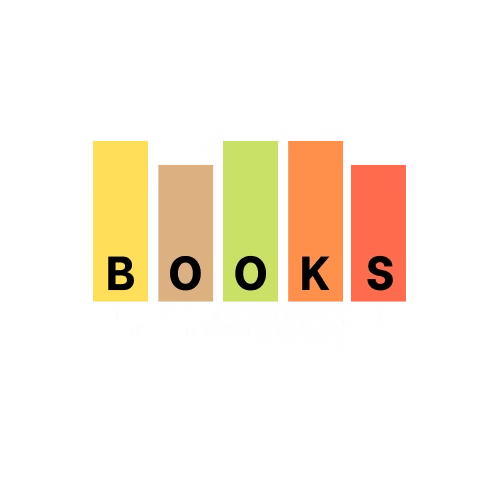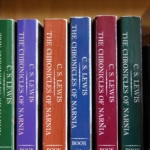Read every series in the right order

Reading Order FAQs: Quick, Reliable Answers for Every Series Lover
Reading order can be confusing—especially with prequels, novellas, tie-ins, and multiple editions in play. This guide offers concise, reliable answers to the most common questions readers ask when trying to navigate a book series. Whether you’re sorting through publication vs. chronological order, tracking multiple formats, or figuring out which edition to buy, this resource helps simplify the process. Common pitfalls and advanced questions are addressed with clarity and context, so readers can feel confident diving into their next series.
Table of Contents
Reading-Order Basics
What’s the difference between publication order and chronological order?
Publication order = release dates. Chronological = in-universe timeline. We list both when they differ.
Which order does the author recommend?
If the author has stated a preferred order, we flag it clearly in the guide.
Do I need to read prequels first?
Not usually. Prequels often assume you know future reveals—save them for later.
Are companion novellas essential?
About 30% are—especially mid-series stories. We label the rest as “optional.”
What about short story collections?
We either place them by earliest in-story date or put them in a Companion Works section.
Why do omnibus editions use different numbers?
They count by volume, not individual books. Check the ISBN notes for clarity.
Are deluxe or illustrated editions safe to start with?
Yes. The content is usually the same—just prettier packaging.
Does reading order matter for cozy mystery series?
Each mystery is self-contained, but ongoing character arcs flow better in publication order.
How can I verify an order quickly?
Use Goodreads or StoryGraph → sort by “original publication.” Then double-check with our guide.
Why do some guides list dual numbers like 1 / 1.5?
“1.5” is typically a novella that fits between Books 1 and 2. Great for context, not essential.
What if two books release on the same day?
We go by spine number, author note, or alphabetically if there’s no official guidance.
Do adaptations change the reading order?
No. Stick with the book order. Movies or TV often shuffle plot for pacing.
Tracking & Tools
Best free app to track series progress?
StoryGraph. No ads, flexible tagging, and sortable series shelves.
Can Kindle show series order?
Sometimes. Tap More → “Show in Series.” Metadata gaps may list it as Book 1 of 1.
How do I build a printable reading checklist?
Export a CSV from our tables. Paste it into Google Sheets or Notion and customize as needed.
Any tool to track box-set discounts?
Yes—eReaderIQ alerts you when box sets or bundles go on sale.
Where can I find Kindle Unlimited–eligible series?
We tag KU picks in every guide and refresh our listings monthly.
Can I sync ebook and audiobook progress?
Yes—with Kindle and Audible Whispersync. Not all titles support it.
Is there a way to hide Goodreads spoilers?
Yes. Use the Goodreads Spoiler Hider browser extension.
How do I track multiple reading orders (canon vs. alternate)?
Use StoryGraph custom shelves or build a split-column Notion tracker.
Does Libby show series order?
Sort of. Use the “parts” filter and check against our guides for accuracy.
How often are these tools reviewed?
Quarterly. We update our Tools Hub to keep things current.
Formats & Editions
Why are US and UK book numbers different?
Sometimes publishers combine or split volumes. We show both ISBNs where relevant.
Do audiobook narrators ever change the order?
Do audiobook narrators ever change the order?
Are large-print editions missing content?
No. Just larger type—same story.
What if the author releases a revised edition?
We note it as “Revised 20XX” but place it in the same slot in the reading order.
Do graphic novels count in the reading order?
Not usually. They adapt existing events. Read after the prose originals.
What’s the difference between ISBN-10 and ISBN-13?
ISBN-10 is the old system. ISBN-13 adds a “978” prefix and changes the checksum.
Can I mix formats (paper, ebook, audio)?
Yes. Just be careful with omnibus editions that combine multiple volumes.
Why do different editions have different page counts?
Layout, font size, and bonus material vary. Word count is more consistent.
Are foreign-language editions released in the same order?
Not always. We follow the original language’s sequence and flag differences.
Do illustrated editions add new story content?
Not typically. They add artwork, maps, or forewords—but rarely change the plot.
Buying & Availability
What if a book is out of print?
Try ThriftBooks, Better World Books, or request through your library’s inter-library loan.
Tips to save money on long series?
Watch for Kindle Daily Deals, KU trials, Audible 2-for-1 sales. Check our Buying Tools page.
Do movie tie-ins change the book content?
No. Just the cover.
Is Kindle Unlimited worth it for just one series?
Maybe. If the list price times number of books is more than three months of KU, it’s worth it.
Why is the Kindle box set cheaper than singles?
Box sets are often discounted to boost discovery. If you’re starting from scratch, they’re a great value.
Can I gift an entire series digitally?
Yes—use Amazon’s “Buy for others” feature on the box set page.
Where can I buy DRM-free ebooks?
Check Humble Bundle, Kobo, or direct from the author or publisher when available.
How do I spot fake physical copies?
Look for off-center logos, blurry covers, and odd typefaces. Buy from trusted sellers.
Will my library have every title in order?
Not always. Use Libby or Hoopla to fill gaps, and confirm the order with us.
Do KU titles disappear without notice?
Amazon flags them as “Leaving Soon” about 30 days before. We note that in our guides.
Advanced & Miscellaneous
How do I read a shared universe or multi-author series?
Start with the core arc. We use color-coded tables and dual tags for crossovers and spin-offs.
What’s “canon vs. legends” in a series like Star Wars?
Canon = official post-Disney timeline. Legends = earlier expanded universe. We list both.
Are fan-written sequels considered part of the series?
Only if the original author confirms. Otherwise, we tag it as non-canon.
What is a “publication gap”—and should I wait?
It’s the time between books. If you hate cliffhangers, wait until the series is near complete.
Do audio dramatizations count in the reading order?
They’re often abridged or reordered. Treat them as bonus content, not core.
Why are some stories labeled “0.5” instead of “1.5”?
“0.5” means it occurs before Book 1. “1.5” falls between Books 1 and 2.
What if an author rewrites old events in later books?
Stick with publication order. We’ll note any major changes in the guide.
Can’t Find Your Question?
Still unsure about something? Ask us here →
We’ll get back to you within 48 hours—and we may add your question to this page for future readers.







